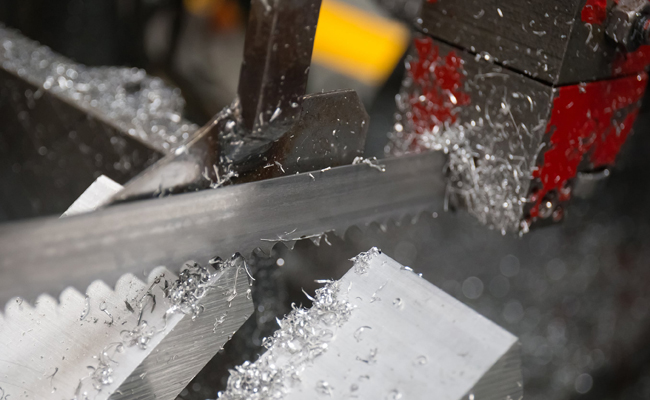CL3350 CNC Horizontal Band Saw Machine For Die Steel
Cutting Capacity :
High-speed metal circular saw machine is suitable for sawing and cutting various large-diameter hard metal materials, steel, copper, solid bars, and thick-walled pipes. The cut surface is smooth, fast, without burrs, high sawing precision, fast speed, long machine and saw blade life, and less consumables. Some users reported that they would encounter some problems during use. Today, we will make a specific analysis of the causes of various faults in the use of high-speed metal circular saw machine:

1. The motor starter of the high-speed metal circular saw machine does not rotate and there is a buzzing sound
Reason: The power supply is missing a phase, and the emergency shutdown is checked.
2. The motor of the high-speed metal circular saw machine can only operate in single phase
Reason: The pole-changing switch is broken; one of the six wires leading out of the motor is damaged.
3. The coolant of the high-speed metal circular saw machine does not spray out
Reason: Insufficient coolant in the water tank; the cooling pump motor is not powered; the cooling pump motor is damaged; the valve on the water pipe is not opened.
4. The motor of the high-speed metal circular saw can run, but it is noisy and has insufficient horsepower.
Reason: The power supply is missing a phase; the voltage is inaccurate, which should be within the standard voltage ±5% range; the gear oil is inaccurate, causing damage to the oil seal or causing the oil to enter the motor and damage the insulation and become necrotic.
5. The high-speed metal circular saw has abnormal noise when sawing
Reason: The saw teeth are not sharp or broken; the workpiece is not clamped; the chips are glued to the teeth, and the machine should be stopped.
6. The saw blade of the high-speed metal circular saw is damaged or broken
Reason: The blade cover is not locked; the saw blade is not pulled back enough before locking, and the saw blade is not close to the blade cover, causing pulling during sawing; the saw blade is too blunt, and the cutting load is too large, which will tear the saw blade or cause the workpiece to rotate during cutting, so it must be re-grinded before use; the saw blade tooth shape is incorrect; the number of saw blade teeth is inappropriate; the feed is too large, and the bite is too much overload; the workpiece is too sharp or too thin when starting to saw; the saw blade speed is too fast/the material is too hard.
Cutting Capacity :
Cutting Capacity :